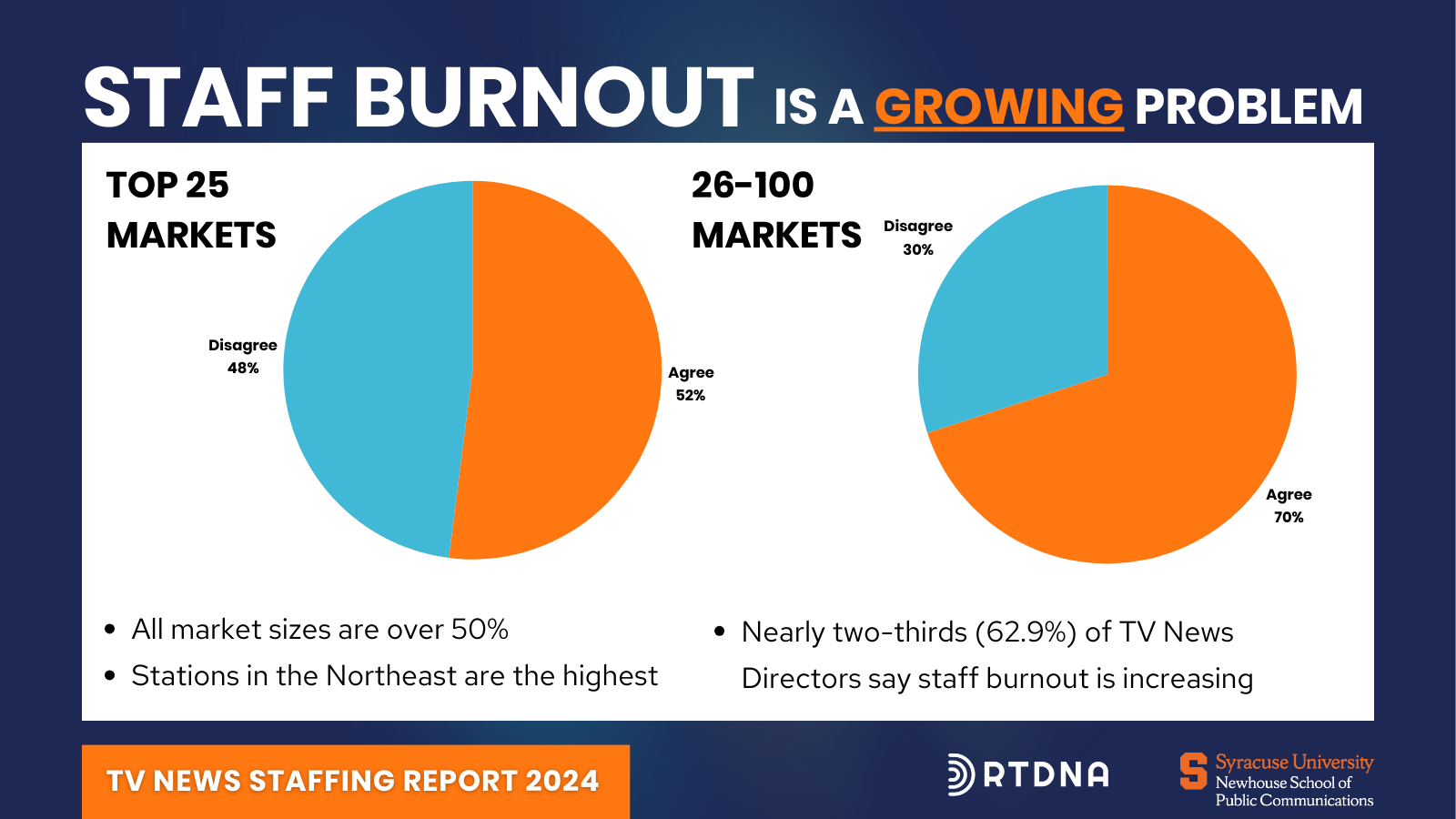Local TV news staffing rises despite burnout challenges

By Bob Papper and Keren Henderson
The latest RTDNA/Newhouse School at Syracuse University Survey shows the total (full time) local TV news employment up 1% from a year ago to 27,880. Following last year’s 5.1% increase, this is particularly impressive considering the total number of local TV newsrooms decreased by 14 compared to a year ago. So the average and typical TV newsroom is noticeably bigger. The total number working in local TV news is 120 shy of the all-time record of 28,000 set in 2021.
It’s also impressive because it was not a good year for journalists. In 2023, it was estimated by employment firm Challenger, Gray, and Christmas that print, broadcast, and digital journalism experienced a decline of 3,087 jobs. But those losses appear to have largely bypassed local TV news.
Staff growth is across the board. The average station is up in staff in every size market except 101 to 150 — where it held steady. With the exception of the 26 to 50 market size, where there is a slight drop, the median staff size has increased or remained steady in every other market.
In every market size except 26 to 50, where there was a minor decline, part-time staff either increased or remained largely unchanged.
For the second year in a row, the survey asked whether news directors had seen more evidence of staff burnout than in the past. Staff burnout continues to be a growing problem, with nearly two-thirds (62.9%) of news directors agreeing. In the top 25 markets, the percentage is lower at 52%, as well as in the smallest markets at 54.5%. Nevertheless, all market sizes are over 50%, with markets 26 to 100 surpassing 70%.

The latest RTDNA/Newhouse School at Syracuse University Survey found the average TV station hired 8 replacements during 2023 and 1.1 new, additional positions. Both of those numbers are down from a year ago: replacements by 1.7 and new hires by 0.6. The median (typical) numbers are lower. The typical TV station hired 6 replacements and 0 new hires. Stations in the West and Northeast easily outpaced stations in the South and Midwest. That represents an increase for the Northeast and a drop for the South.

About the Authors
Bob Papper is Research Professor of Broadcast and Digital Journalism at Syracuse University and has worked extensively in radio and TV news.
Keren Henderson is Associate Professor of Broadcast and Digital Journalism at Syracuse University.
This research was supported by the S. I. Newhouse School of Public Communications at Syracuse University and the Radio Television Digital News Association.
About the Survey
The RTDNA/Newhouse School at Syracuse University Survey was conducted in the fourth quarter of 2023 among all 1,876 operating, non-satellite television stations and a random sample of 4,764 radio stations. The television response rate is different for every question, but Valid responses came from as many as 1,387 television stations (73.9%) and 631 radio news directors and general managers representing 1,902 radio stations. Some data sets (e.g. the number of TV stations originating local news, getting news from others and women TV news directors) are based on a complete census and are not projected from a smaller sample.
